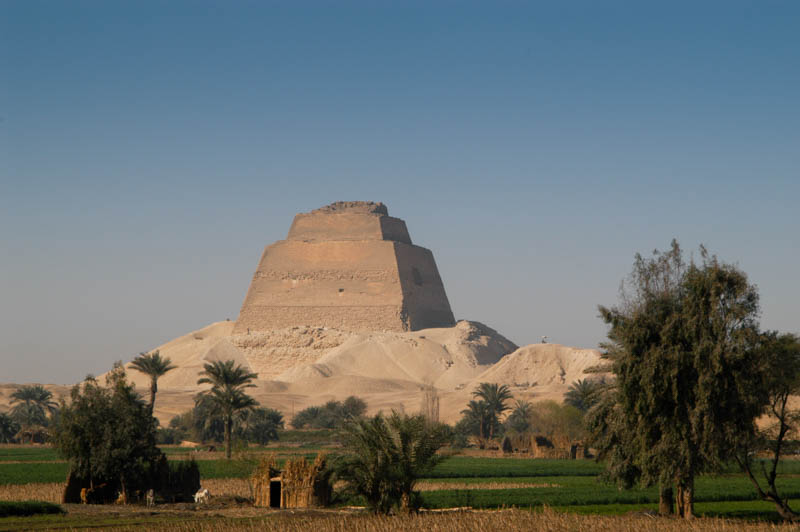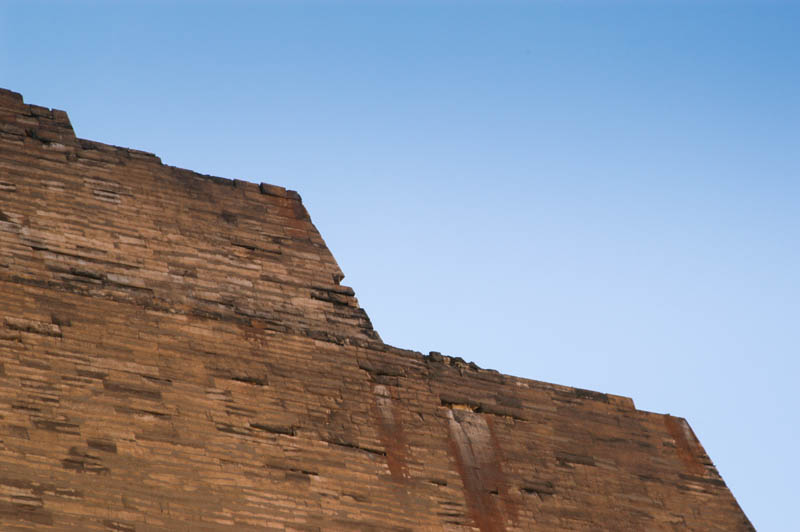
Few itineraries include the collapsed Pyramid of Maidum, a fourth dynasty edifice built by the pharaoh Sneferu. But it is interesting because of the unique role it plays in the history of pyramid building — it marks the intermediary step between the Step Pyramid of Djoser and the true pyramids found later at Dashur and in Giza.
There is some argument as to who actually built this pyramid — some believe that it was started (if not finished) by Huni, the last king of the third dynasty. Others, however, attribute it to Sneferu. It is possible that Sneferu finished the pyramid.

This was the first attempt to build a true pyramid, not a stepped pyramid like that at Saqqara. Unsure how to proceed, the builders apparently started with a small stepped-pyramid core, which they then “filled in” to make a smooth pyramid shape. It was originally started as a seven tiered step pyramid, including fine facing stone. Then another layer was added, making the whole pyramid larger, and another facing stone layer was added.

At this point, it would have looked like a steep version of the Step Pyramid at Djoser. But that wasn’t the end of the modifications — each of the steps was filled in with casing blocks and then smoothed with a final layer of limestone. The stones were laid with a noticeable inward slant to attempt to resist the natural forces trying to flatten the pyramid